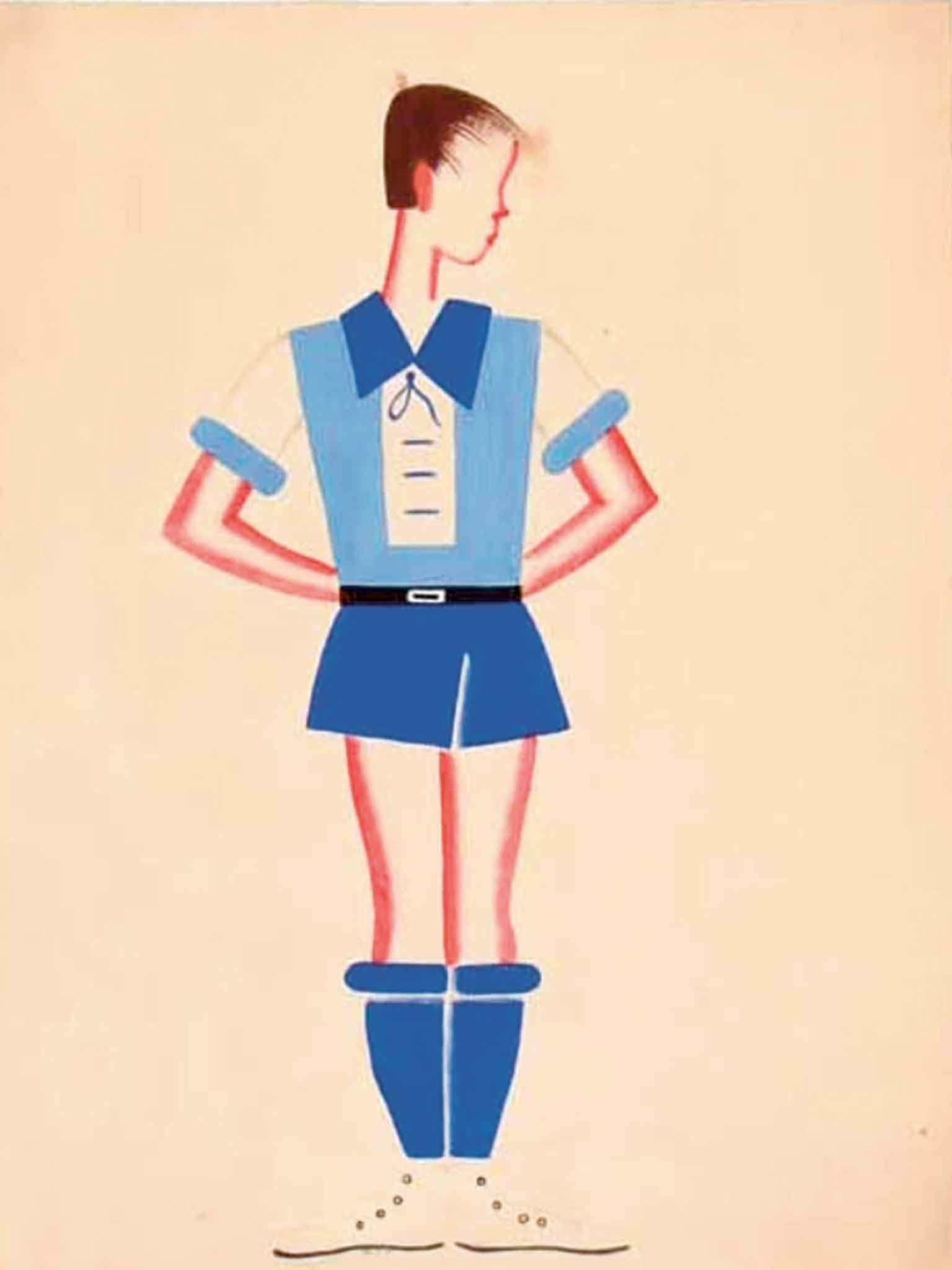Tatiana Bruni's groundbreaking costume designs for The Bolt go on show
In 1931, ‘The Bolt’ fell foul of Stalin’s censors before it even opened. But now images from the original production are on display

Your support helps us to tell the story
From reproductive rights to climate change to Big Tech, The Independent is on the ground when the story is developing. Whether it's investigating the financials of Elon Musk's pro-Trump PAC or producing our latest documentary, 'The A Word', which shines a light on the American women fighting for reproductive rights, we know how important it is to parse out the facts from the messaging.
At such a critical moment in US history, we need reporters on the ground. Your donation allows us to keep sending journalists to speak to both sides of the story.
The Independent is trusted by Americans across the entire political spectrum. And unlike many other quality news outlets, we choose not to lock Americans out of our reporting and analysis with paywalls. We believe quality journalism should be available to everyone, paid for by those who can afford it.
Your support makes all the difference.It was the ballet that never made it to opening night. On 8 April 1931, the Russian composer Dmitri Shostakovich presented the dress rehearsal for The Bolt, a tale of an indolent worker who persuades a young man to throw a bolt into some machinery in a factory order to sabotage production after being sacked.
Despite not being the official premiere, the audience was filled with critics and members of the Soviet government. Those attending were not exactly impressed. The ballet was immediately banned and all future performances cancelled.
At a time when Stalin was consolidating his power and focusing on rapidly industrialising the Soviet Union, the production was perceived to be a mockery of official policy. It was a time when the last flames of unofficial artistic expression were being snuffed out and the authorities kept a close eye on the avant-garde.
Now, Grad (Gallery for Russian Arts and Design) is putting on an exhibition which tells the tumultuous story of the production, through a selection of period photographs and displays of costumes from the ballet. Visitors can even hear the original score, a curious mix of circus music, waltzes, marches and tango that the composer envisaged as a celebration of the proletariat, but which the authorities deemed "grotesque", because of its inclusion of popular music.
One of the most compelling elements of the exhibition are the original costume designs by Tatiana Bruni, which have been described as "the apogee of post-revolutionary Russian experiments in stage design". Her colourful sketches bring to life the various characters, including the Loafer, the Textile Worker, and the Bureaucrat.
"She was very influenced by the graphics school that was emerging in Leningrad at the time, as well as propaganda posters," says Grad's co-curator Elena Sudakova. "And although the arts were being shut down, illustrated children's books were flourishing; you can see them in her work, too. But it still conveys this aesthetic of the avant-garde as well as a bit of cubism and futurism."
Bruni was so proud of her designs that when she was offered her first solo exhibition in 1979 she actually redrew a number of her creations. And it just so happens that a selection of these are currently being shown at the Victoria and Albert Museum, as part of their exhibition Russian Avant-Garde Theatre: War, Revolution and Design 1913-1933.
"She considered them to be the most important part of her career; they have this witty quality about them," says Grad's co-curator Alexandra Chiriac of the costumes. "The redesigns were not identical but inclusive of how she remembered the performance."
In the end, The Bolt was staged just one further time, 74 years after it was banned, when the Bolshoi Ballet's director, Alexei Ratmansky, reconstructed the work. Although he had the music to use, no records of the original choreography remain, so an identical spectacle was not possible.
Despite its early dismissal, The Bolt is today celebrated as an emblem of a time when art was on the cusp of huge change in Russia. The year after the ballet was first staged, the collective Soviet imagination was suppressed still further with the 1932 issue of the 'Decree on the Reconstruction of Literary and Artistic Organisations', a measure designed to diminish artistic independence. But perhaps The Bolt was treated unfairly.
"The ballet failed to include a single positive Communist character," says Sudakova. "The irony is the critics didn't actually understand that it was a parody. In all the reviews, Shostakovich was accused of being anti-Communist, but they didn't get the point that it was a satire" µ
'Bolt' at the Gallery For Russian Arts and Design, 3-4a Little Portland Street, London W1, 6 December until 28 February 2015.
Russian Avant-Garde Theatre: War, Revolution and Design 1913-1933 at the Victoria and Albert Museum, Cromwell Road, London SW7, now until 25 January 2015
Join our commenting forum
Join thought-provoking conversations, follow other Independent readers and see their replies
Comments